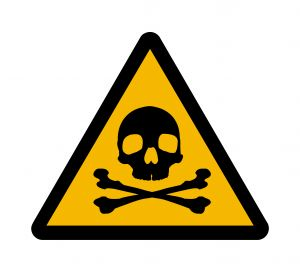When we think about mold, most of us recall having to toss out bread, cheese, or other food items that have lingered in our kitchen for too long. However, sufferers who have fallen sick due to toxic mold in San Francisco, Oakland, or other Northern California communities have a very different response. For them, mold inhaled at home or on the workplace is the source of long-term illness and a great deal of struggle.

The vast majority of mold we encounter on a regular basis, such as the mold that might appear on a shower curtain, is harmless. However, some types of mold can cause serious illness. One particularly dangerous type of mold is stachybotrys chartarum, a greenish-black mold that can be found in chronically moist or wet environments, particularly where materials have a high cellulose content including drywall, paper, wood, and certain ceiling materials. Toxic mold gives off spores or mycotoxins that can be inhaled by an unsuspecting individual.
Initial or short-term exposure to toxic mold can cause symptoms that resemble a cold or allergy attack such as sneezing, headache, watery/itchy eyes, and skin irritation including itchy feeling. If exposure to a dangerous strain of mold continues, a person may experience constant headaches, vomiting, diarrhea, weight loss, hair loss, persistent fatigue, short-term memory loss, rashes or sores on the skin, and respiratory ailments such as repeated bouts of bronchitis, sinus infections, and even coughing that brings up blood. Individuals who continue to inhale mold for a longer period can get even sicker and can suffer permanent health ailments such as long-term memory loss, brain damage, blindness, bleeding in the lungs, cancer, and even death.
Testing for and cleanup of mold can be a complicated endeavor. The testing process is expensive but can be important if a lawsuit is contemplated. In many cases, effective cleanup will require removal of the infected surfaces, especially materials that are porous and therefore difficult or impossible to thoroughly clean. It is also important to identify and repair any leaks or other sources of moisture. Mold exposure is particularly high during cleaning. No one with mold-related illness should be involved in, or present during, cleanup efforts.
California is one of the states that has led the nation in mold-related legislation. The Toxic Mold Protection Act of 2001 called for the state Department of Health Services to set acceptable levels of indoor mold exposure for populations that are especially sensitive such as children or those with existing respiratory issues. The Act also allowed the Department to create identification and remediation standards that apply to owners, contractors and landlords. California also requires that landlords provide prospective tenants with written disclosure if the landlord is aware, or has reason to believe, that mold exists on the premises and either exceeds permissible limits or otherwise poses a health threat to a potential occupant. This responsibility exists even where mold is hidden or invisible. Landlords may also be liable if mold renders a property unfit for human occupation or results from the landlord’s failure to repair leaks.
If you have been exposed to mold and suffered mold-related illness in the Northern California region, please contact our experienced San Francisco toxic mold lawyer. Our team can help individuals or groups of victims recover damages from landlords, employers, construction companies, property sellers, or others whose negligent or wrongful acts contributed to your illness.
Additional resources on mold and mold-related illness can be found via the Department of Health and Human Resources and the California Department of Health Services.
 San Francisco Injury Lawyer Blog
San Francisco Injury Lawyer Blog

